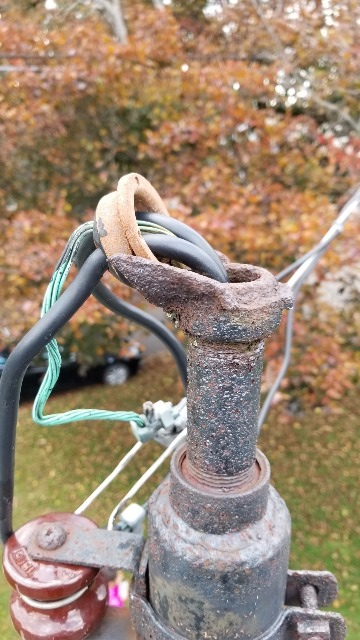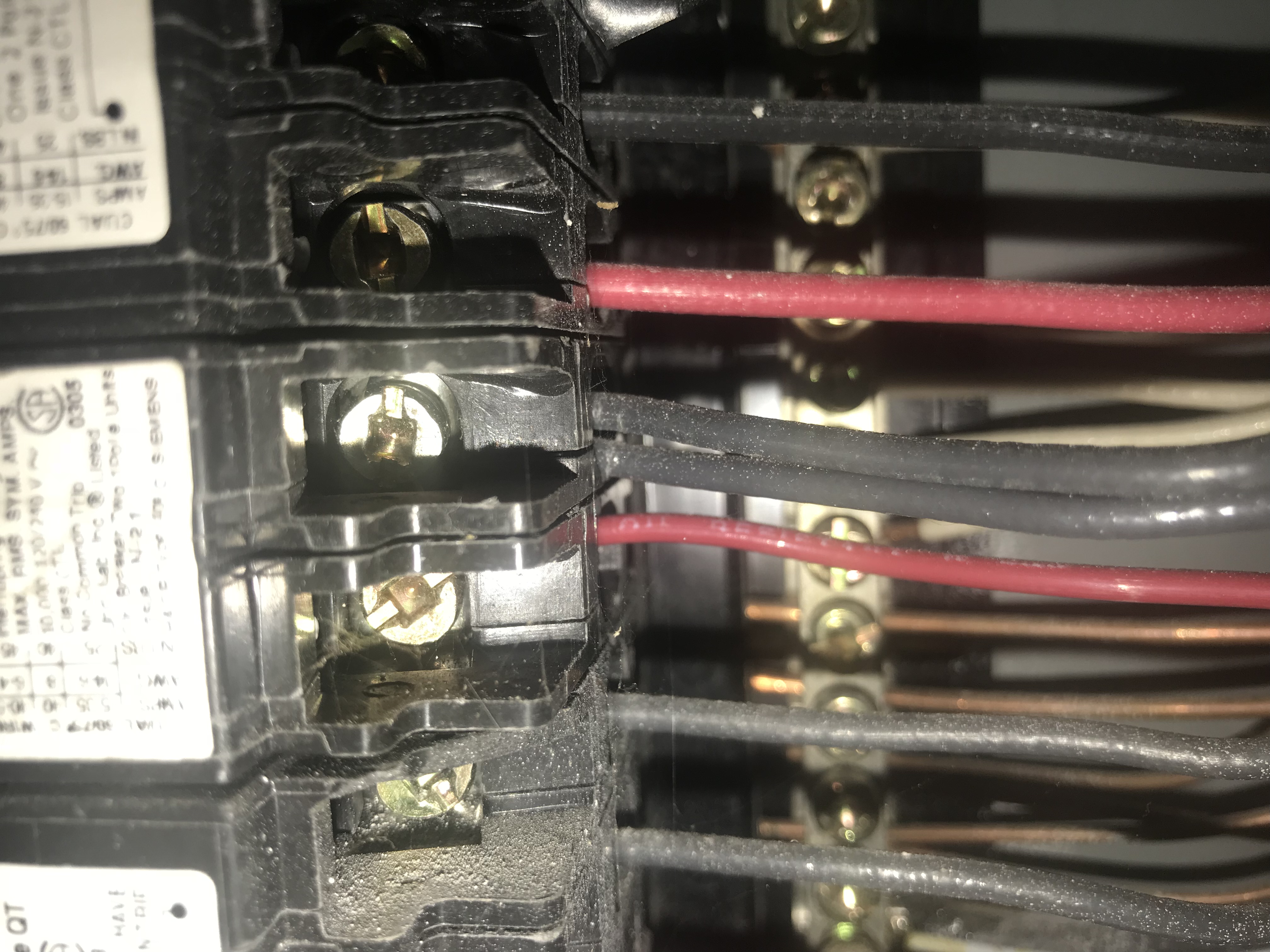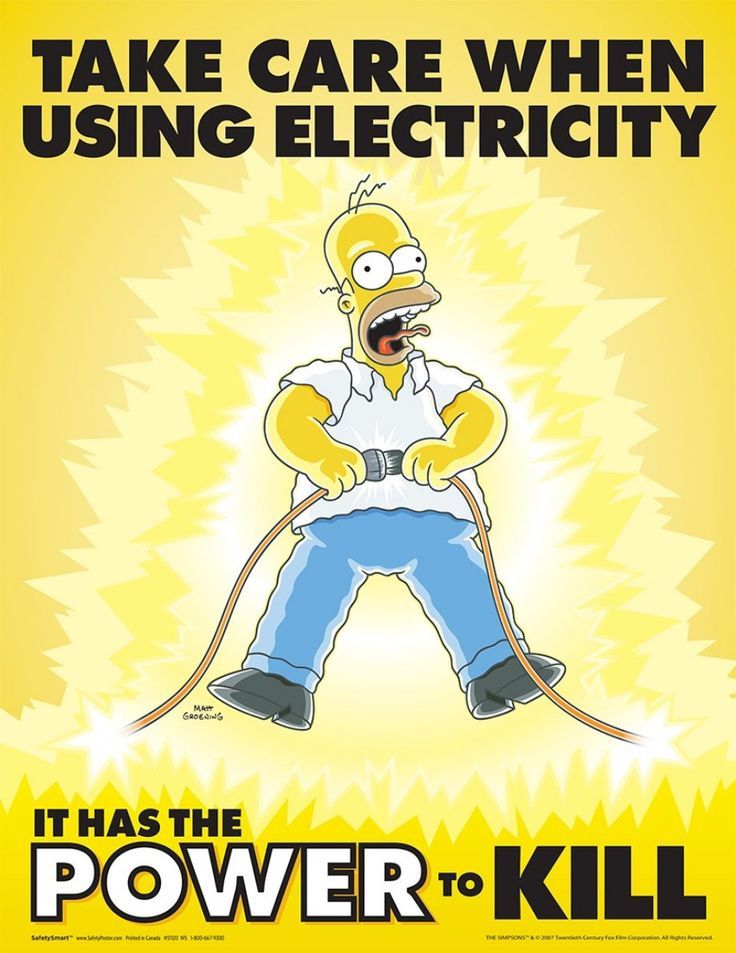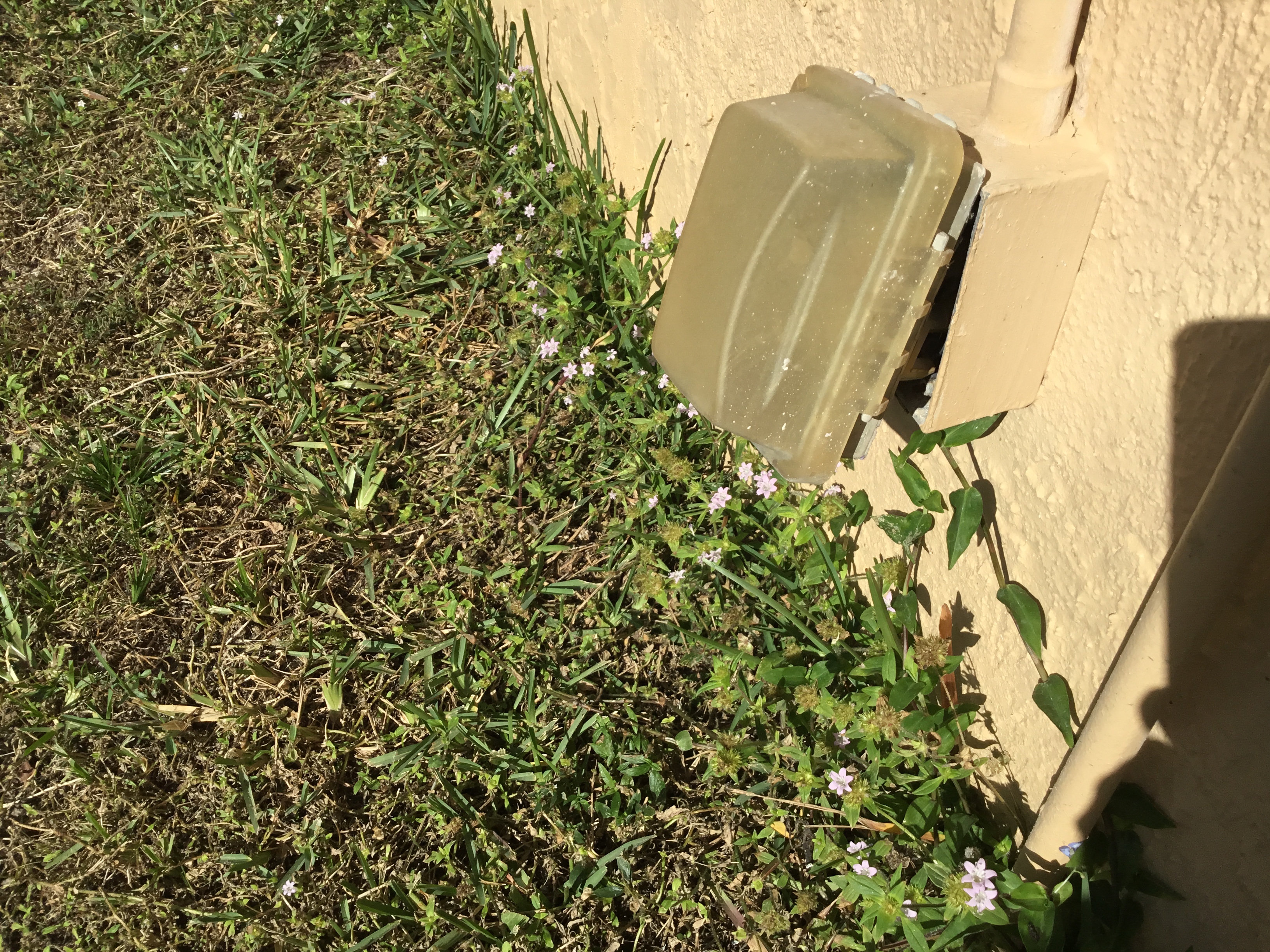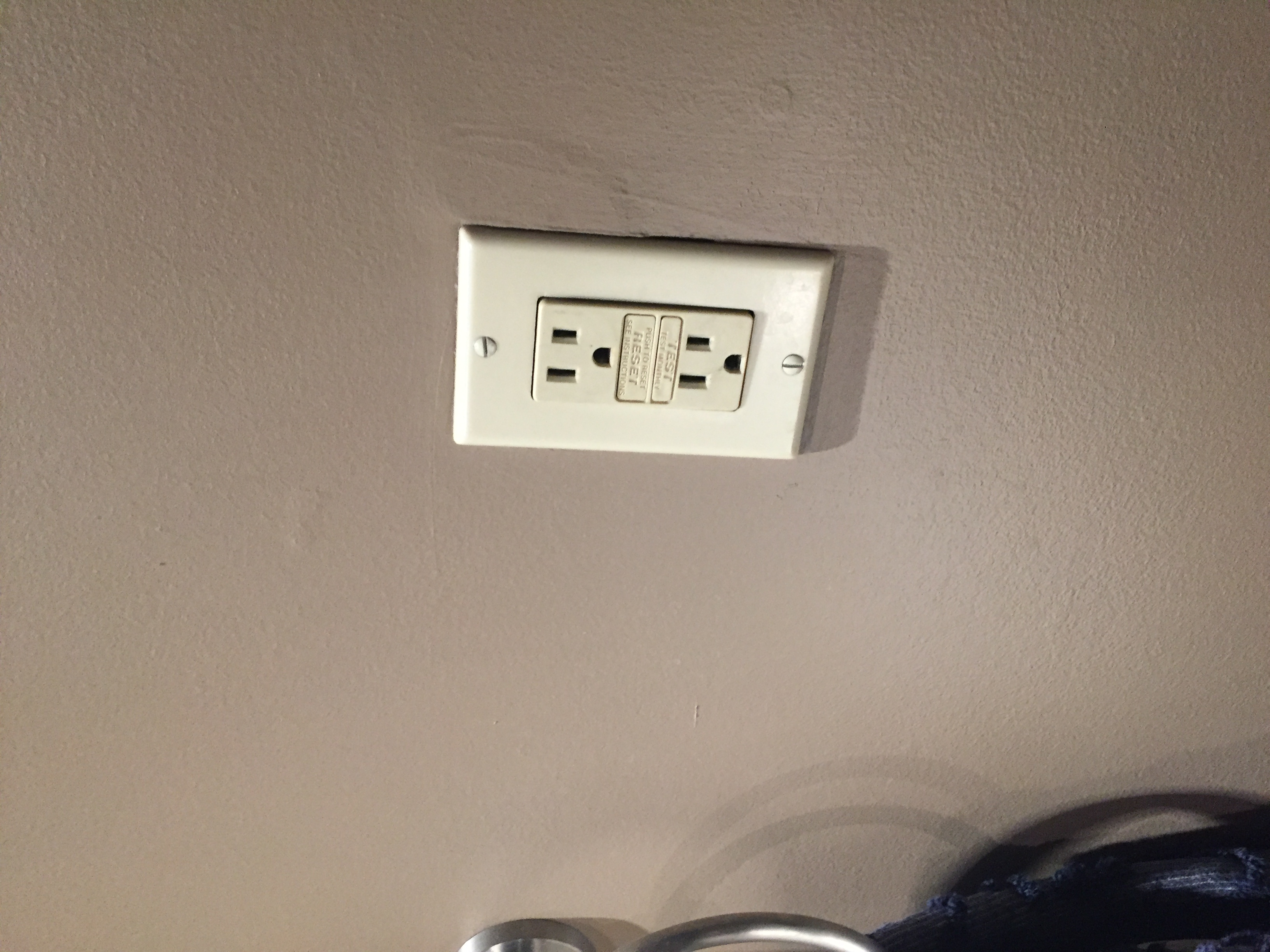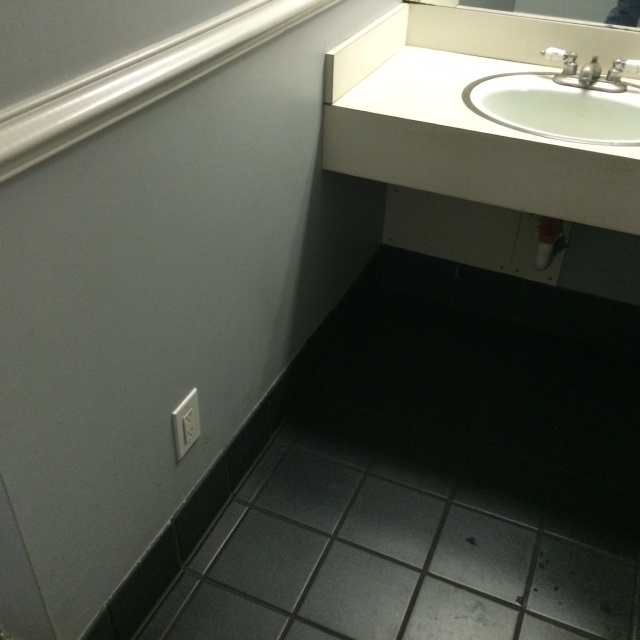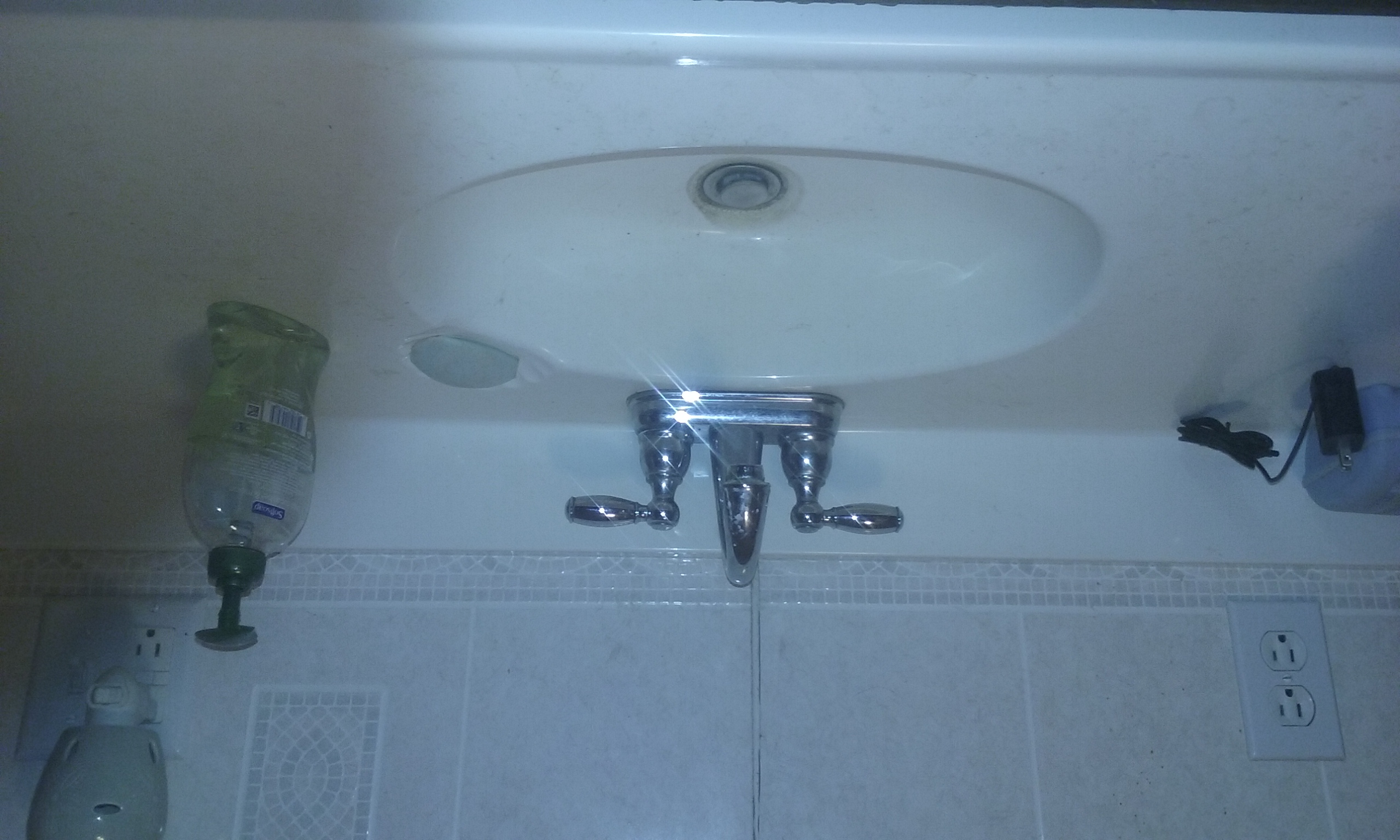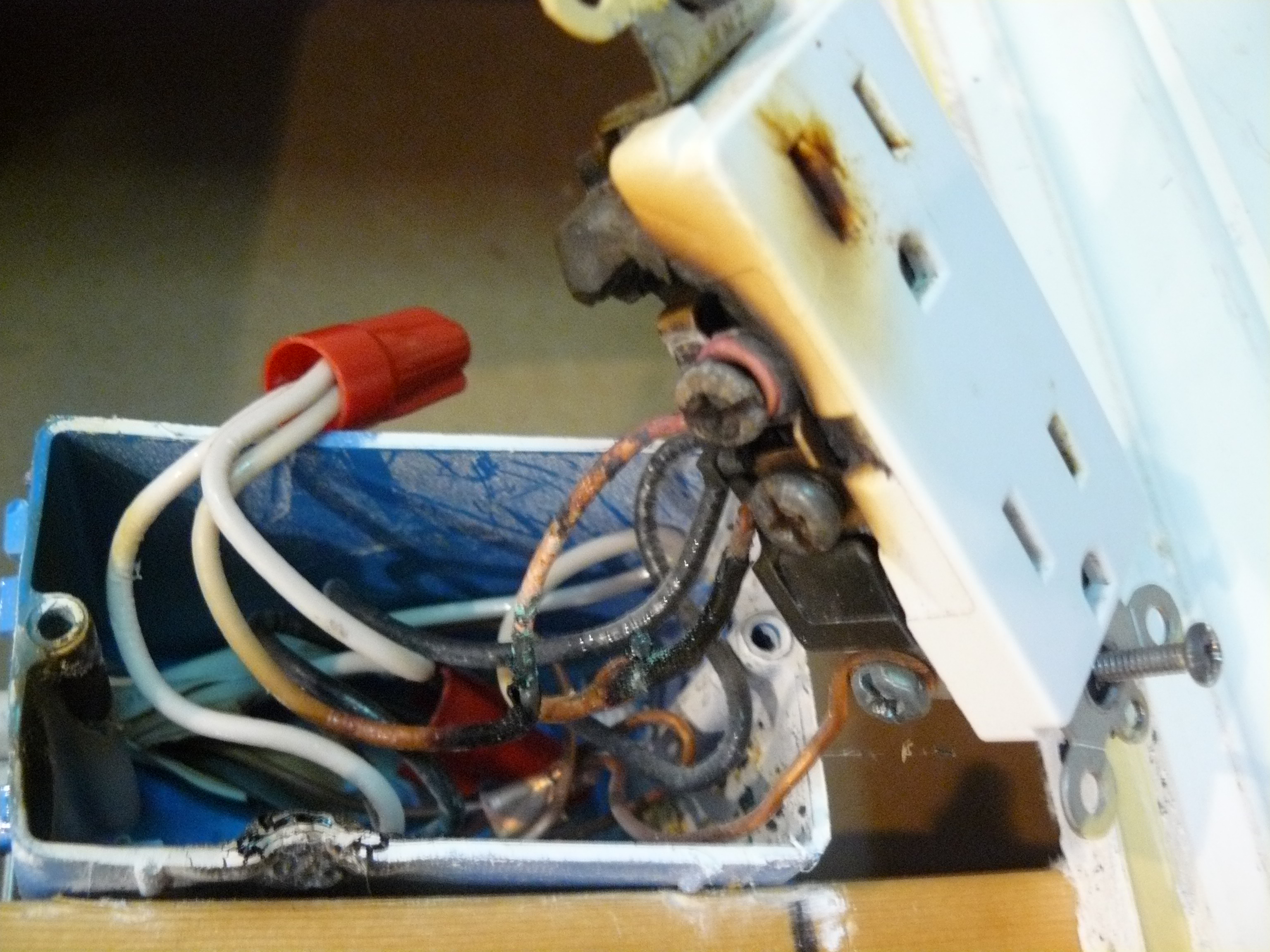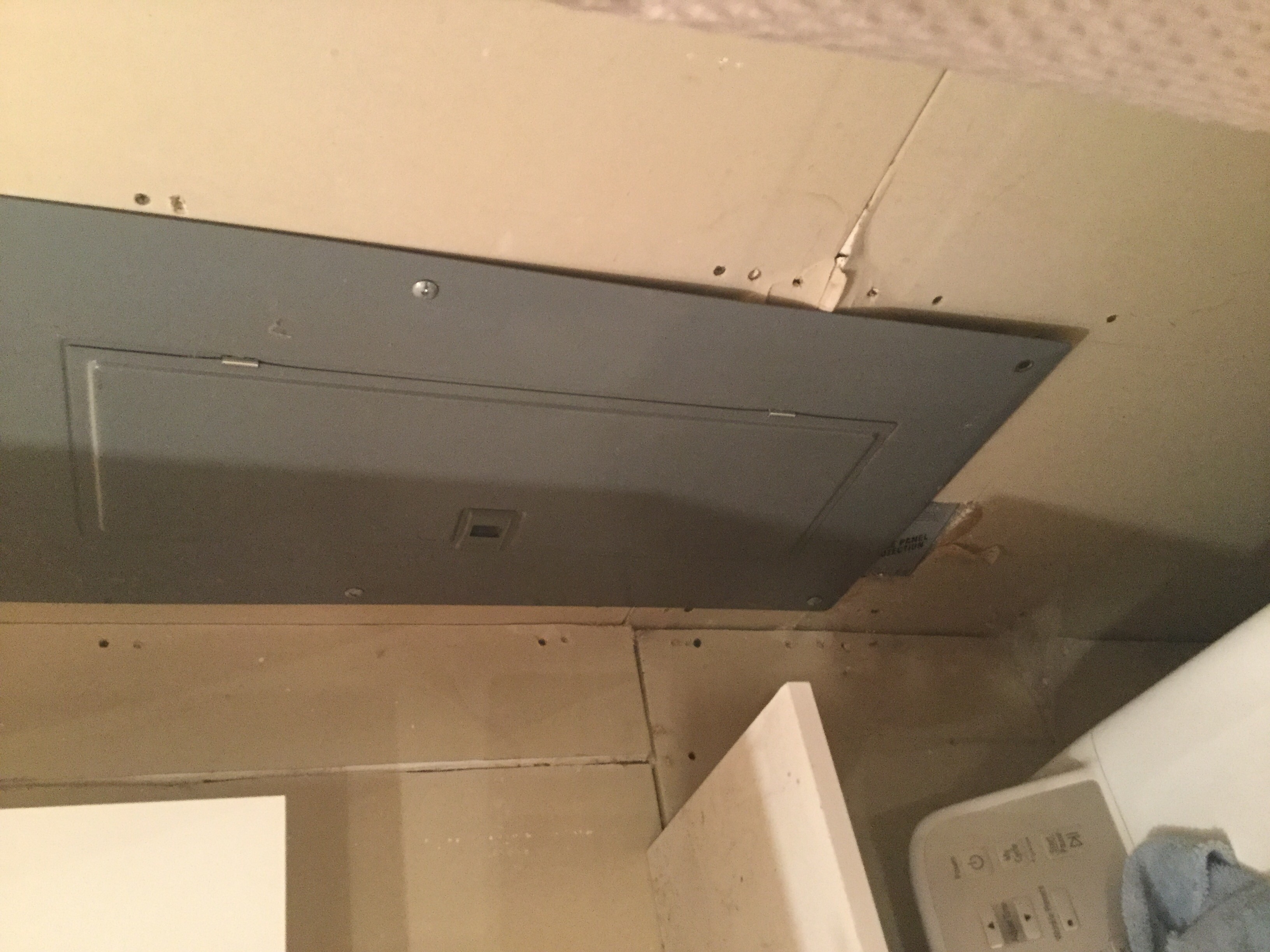There is no mast head on the service mast bringing the wires from the utility. This is causing water to enter the mast and down through the service conductors and into the panel. This is a life/safety issue and needs to fixed ASAP by a qualified electrician.
120/240 Volts describes how there are two “hot” wires of 120 volts coming from the utility and a grounding wire which returns the voltage back to the pole. The 120 volts supplies most of the house and the second is available for the appliances that need it.
Inspecting service panel, it was noted that one of the breakers was double tapped. As noted in the standards of practice, this is not an allowable practice. The inspection report indicated that the defect should be evaluated and repaired by a licensed electrician.
Primarily between 1965 and 1973, solid strand aluminum wiring was used as branch circuit wiring in residential housing. Several properties of aluminum make it undesirable material as an electrical conductor including higher resistance, oxidation and greater thermal expansion and contraction. When solid strand aluminum branch circuit wiring is noted, it should be referred to a qualified electrician for evaluation.
Be very careful working around electricity. Always wear full safety gear and concentrate on what you are doing. When approaching a SE box or any electrical equipment always touch it with the back of your hand first so if it is charged your hand wont grab on to it. it’s not fun. Stay safe!
I chose the Gallery image - DANGER LIVE WIRES OVERHEAD. Power lines are dangerous when a connection to ground is completed, thats why birds can perch on them and nothing happens. Be safe with your ladders and know where your putting your hands. The last thing you want to grab when your falling off a ladder is a power line. Stay safe!
This outlet is on the outside of a home. Near pool equipment. It is wired to a GFCI circuit. Note the outlet is broken allowing water to access the box. This is in need of repair before a electrical issue happens.
Electric Service panels, are to be taken very seriously. They can cause serious injury or even death, if taken lightly or not shown the respect required to safely handle. All required safety gear should be worn and the panel should be check prior to touching. Never assume its safe.
In my photo I’m showing the bathroom receptacle near the sink at my office. It is a GFCI protected. The outlet is mounted at an angle and shows to be aging. When I checked the GFCI functions neither button on the outlet worked. This Recetacle needs to be replaced.
Foe this I chose the article, Electrical Service from Hell. The article is really helpful for me to clearly see problems. The instructors did a great job of photographing and documenting every problem with the panel. I enjoyed it a lot and printed it out for a reference to help me better understand common problems in panels.
The photo attached depicts an outlet within a bathroom that is not GFCI protected. The rectangular shape of the outlet would lead an untrained person to believe that it is a GFCI type outlet due to its general shape. Investigation identified that the outlet is within 3 feet of the vanity basin, so it is likely that the inspector should recommend that the receptacle in this bathroom be upgraded to a GFCI for safety reasons.
I chose an image from the photo gallery that depicts an outdoor receptacle on a deck. If this image is from an older home that does not meet the newer home requirement of being weather tight while in use and is not GFCI protected, then it should be recommended that the outdoor receptacle be upgraded to adhere to the newer home requirement for outdoor receptacles. It should also be noted that all outdoor receptacles would benefit from having a cover.
This picture is of a bathroom sink. There are two receptacles over the sink and neither are GFCI. There is not marks on them to identify them as being GFCI. To make matters worse I checked the service panel and the bathroom is not labeled and there were no GFCI breakers. Recommend replacing the upstream receptacle with a GFCI receptacle.
10 Easy Ways to Save Money & Energy in Your Home by Nick Gromicko, Ben Gromicko, and Kenton Shepard
This article was on was homeowners can do things to save energy in the home. Some of the main activities are changing from incandescent to LED lighting. Unplugging charging units when not in use. Turning down the thermostat or getting a programmable thermostat to keep the temperature down when no one is at home or at night.
the one I pick his showing a big problem alot of over heating around the plug probably cause by a bad connection for shure creating a amperage rise creating arcing and over heating of the plug and also could be that the plug got over loaded with a lot of appliances connected to it.
I was looking the picture of the one of the ICAT fixture and I never knew that they had a gasket between the sealing and the fixture itself I’m gonna have to fix the one at my house.Make sense to no gasket woud be heat going into my attick creating some moisture in cold weather for shure.
First observation of the service panel is that it has improper clearances. There should be 36 in front and it has zero. There is 30 width but it is clearly obstructed. Pleanty of height but again it has obstructions in front.
I was delighted to see a Carbon Monoxide alarm on an inspection today. I believe this life saving device is often overlooked in residential homes, or the degree of importance. We know of some dear folks across the Canadian border who lost their lives before the holidays because their alarm, for what ever reason, was not checked or malfunctioned.Sadly, a husband and wife paid the ultimate price for this unfortunate situation.
GFCI’s are a fascinating device and a special “hats off” to the inventor Charles Dalziel should be noted ! Also encouraging is to see upgrades in the 1980’s to address false tripping issues. It is encouraging to know that electrical code require GFCI’s in locations such as kitchens, laundry rooms, garages, and so on !
I love the idea of using inferred on the electrical inspection if for no other reason than safety. I can look at an outlet or light or the biggest of all a service panel. I can look at at these components first with inferred to make sure there are no issues before I even touch it. I understand that this is not the only step to take but it should be the first.
